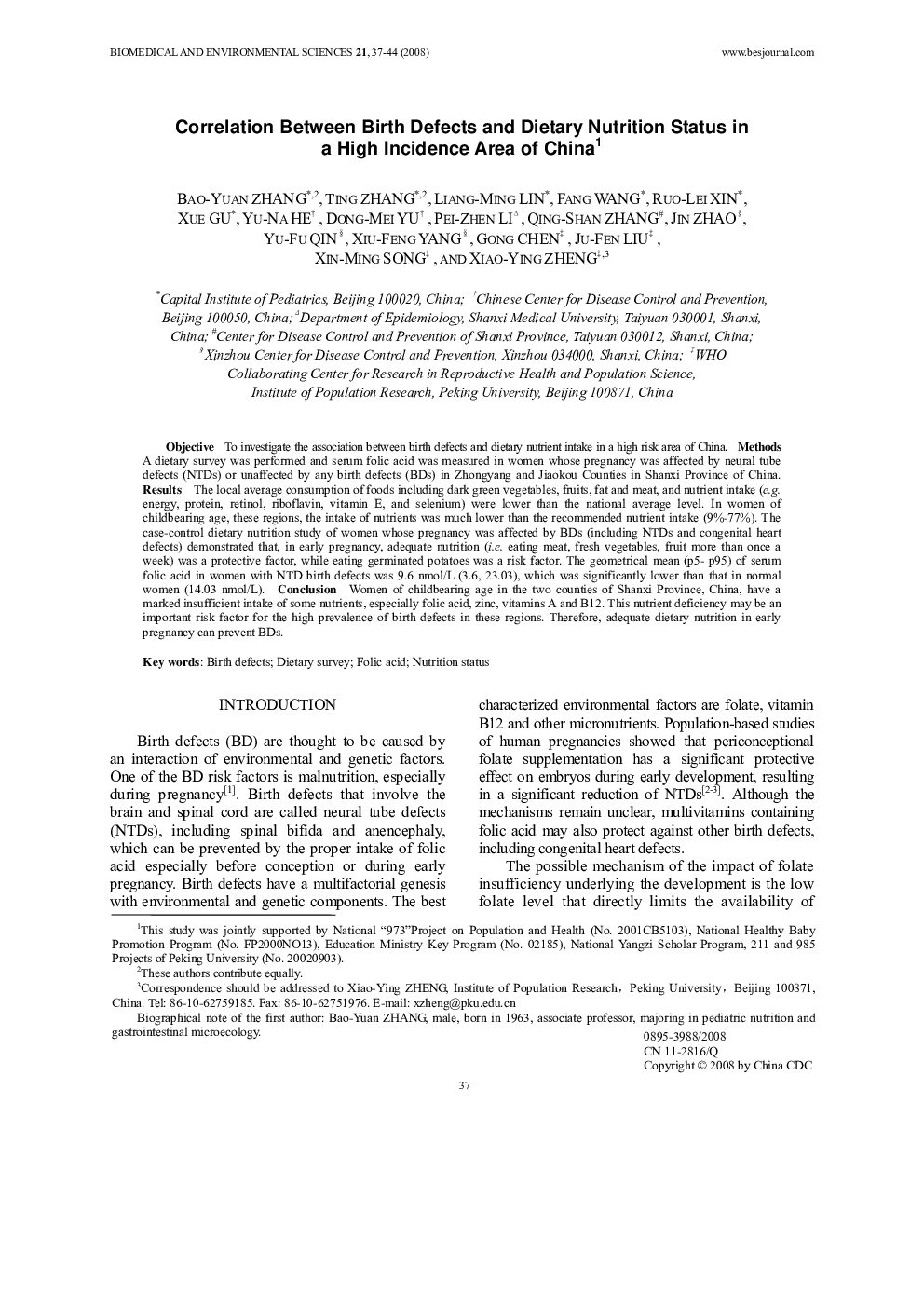| کد مقاله | کد نشریه | سال انتشار | مقاله انگلیسی | نسخه تمام متن |
|---|---|---|---|---|
| 4196302 | 1278673 | 2008 | 8 صفحه PDF | دانلود رایگان |

ObjectiveTo investigate the association between birth defects and dietary nutrient intake in a high risk area of China.MethodsA dietary survey was performed and serum folic acid was measured in women whose pregnancy was affected by neural tube defects (NTDs) or unaffected by any birth defects (BDs) in Zhongyang and Jiaokou Counties in Shanxi Province of China.ResultsThe local average consumption of foods including dark green vegetables, fruits, fat and meat, and nutrient intake (e.g. energy, protein, retinol, riboflavin, vitamin E, and selenium) were lower than the national average level. In women of childbearing age, these regions, the intake of nutrients was much lower than the recommended nutrient intake (9%-77%). The case-control dietary nutrition study of women whose pregnancy was affected by BDs (including NTDs and congenital heart defects) demonstrated that, in early pregnancy, adequate nutrition (i.e. eating meat, fresh vegetables, fruit more than once a week) was a protective factor, while eating germinated potatoes was a risk factor. The geometrical mean (p5-p95) of serum folic acid in women with NTD birth defects was 9.6 nmol/L (3.6, 23.03), which was significantly lower than that in normal women (14.03 nmol/L).ConclusionWomen of childbearing age in the two counties of Shanxi Province, China, have a marked insufficient intake of some nutrients, especially folic acid, zinc, vitamins A and B12. This nutrient deficiency may be an important risk factor for the high prevalence of birth defects in these regions. Therefore, adequate dietary nutrition in early pregnancy can prevent BDs.
Journal: Biomedical and Environmental Sciences - Volume 21, Issue 1, February 2008, Pages 37-44